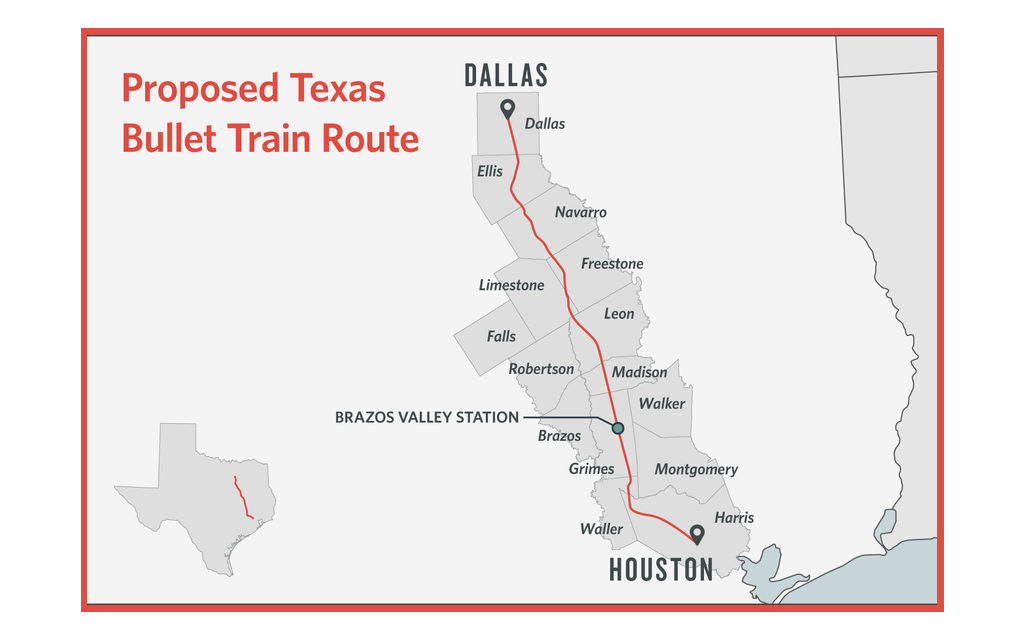Hailed by investors as a major step toward getting final federal clearance for the High Speed Railway project, the Federal Railroad Administration (FRA) signed the Draft Environmental Impact Statement (EIS) this past Friday.
The document is set to be published in the Federal Register on December 22, 2017.
Analyzing six proposed routes, as well as a no-build alternative, the Draft EIS favors the more westerly Utility Line route that runs in our area through Navarro, Freestone, Leon, and Limestone counties.
The other potential route, which was dropped from consideration, would have completely traversed Freestone County, avoiding Limestone County entirely.
The route favored by the Draft EIS includes a terminal station in Dallas just south of downtown, and an intermediate station in Grimes County near College Station, home of Texas A&M University.
Also evaluated were three Houston terminal station options: the Industrial Site Terminal, the Northwest Mall Terminal, and the Northwest Transit Center Terminal.
The Draft EIS is available for a 60-day public comment period, which will end on February 20, 2018. During this time, FRA will hold 10 public hearings in the affected counties in Texas.
Opponents to the High Speed Railway project contend that last week’s release of the Draft EIS, more than two years after the originally intended publication date, does not mean the project is a sure thing.
“There are still many hurdles they have to cross,” reads a Facebook post from Texans Against High-Speed Rail (TAHSR). “This is NOT a done deal.”
Indeed, the FRA states that their Draft EIS “does not grant any approvals or authorizations for the Project.”
The role of this governmental agency in the process is to ensure that the High Speed Rail project is federally compliant, mitigates potential impacts, and is safe.
Perhaps the biggest contention of High-Speed Railway opponents is the potential acquirement of property through eminent domain.
Although publically stating their hope for voluntary property deals with effected landowners, Texas Central leaders have claimed the legal authority to condemn private property, if needed.
Many elected officials and landowners refute that claim, going as far as pushing for local ordinances to stop the project.
Taking four years to get to this point, it remains to be seen how the High Speed Railway project will progress from here.
Freestone County Route:
The preferred route of the Texas Central Railway, based on the recently released Draft Environmental Impact Statement (DEIS) by the Federal Railroad Administration (FRA) will follow the previously proposed Utility Line, which travels east of Wortham and west of Teague.
This route enters from Navarro County into the northern part of Freestone County, a couple miles east of Wortham city limits. It travels in a south easterly direction, crossing FM 246 and County Road 995.
It continues downward to traverse Hwy 27 just west of the FM 1366 intersection, and then travels across County Road 960 (mid-way between FM 1366 and FM 80).
As the route crosses County Road 964 and County Road 961, it curves down into a more southerly direction. It goes across County Road 930 to the east of Cotton Gin, then passes over Highway 84 (west of the Teague City Lake) to follow FM 2777.
As the route continues down, crossing FM 1365, it follows along County Road 844 before sloping slightly westward to enter Limestone County near Chambers Creek.




